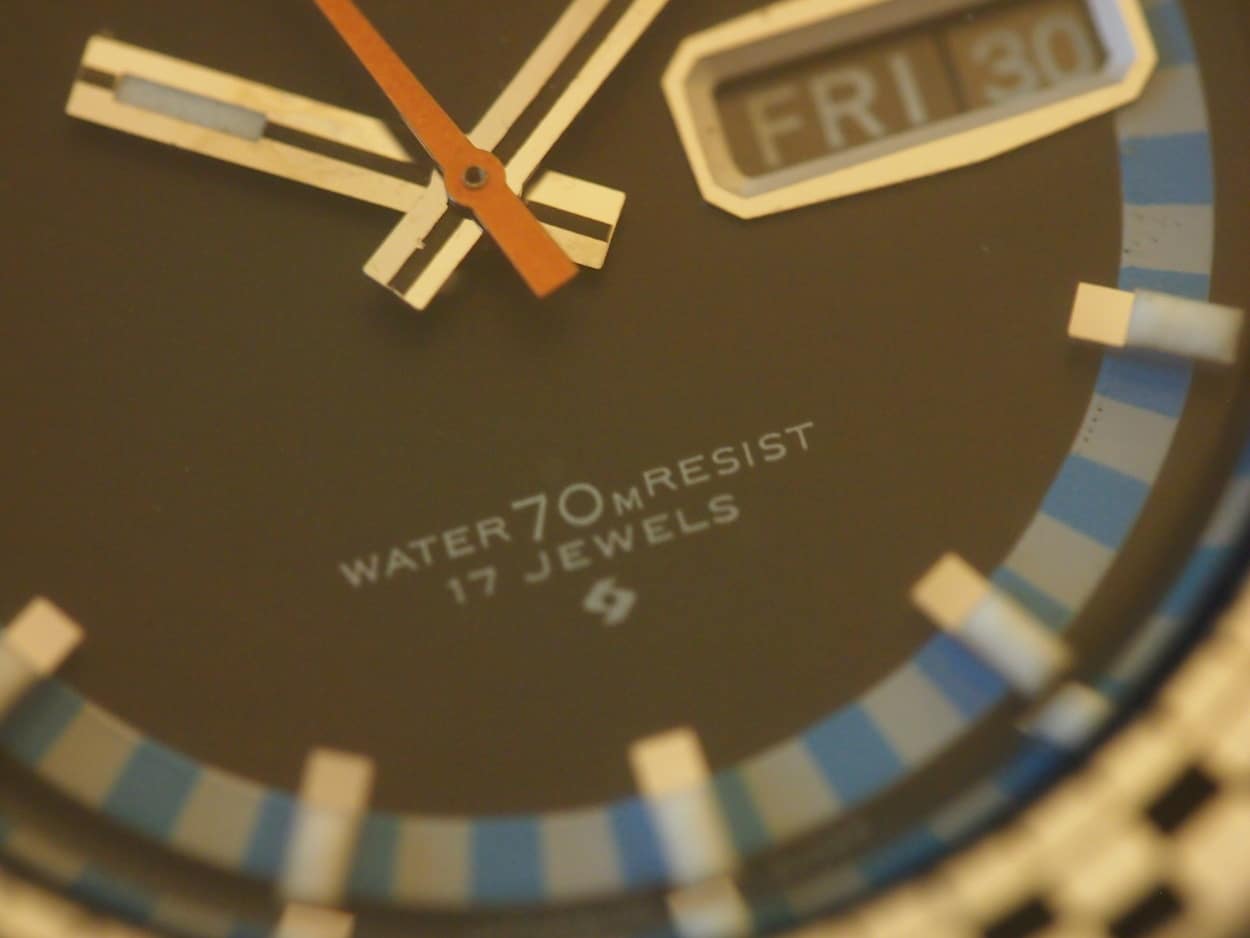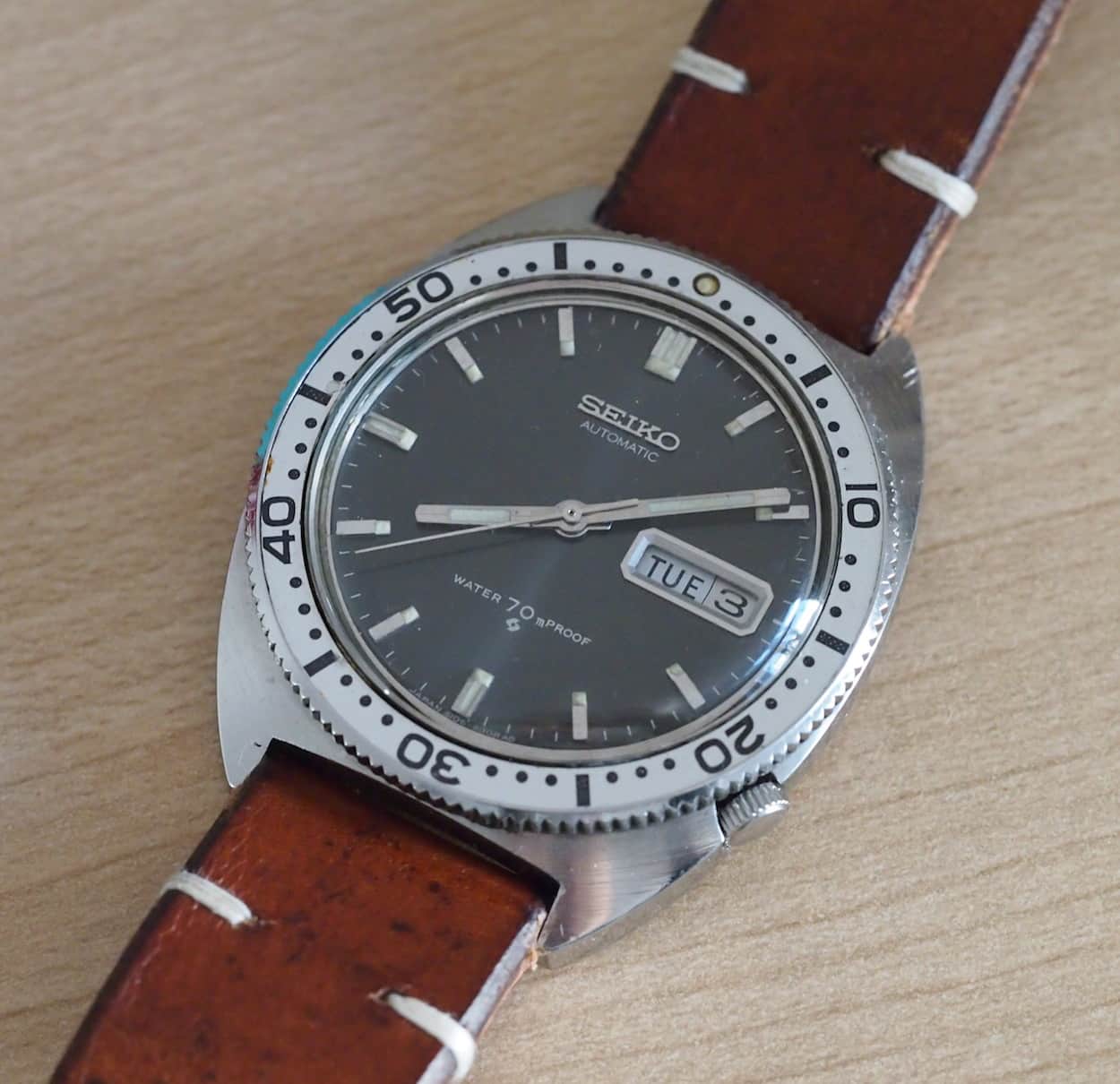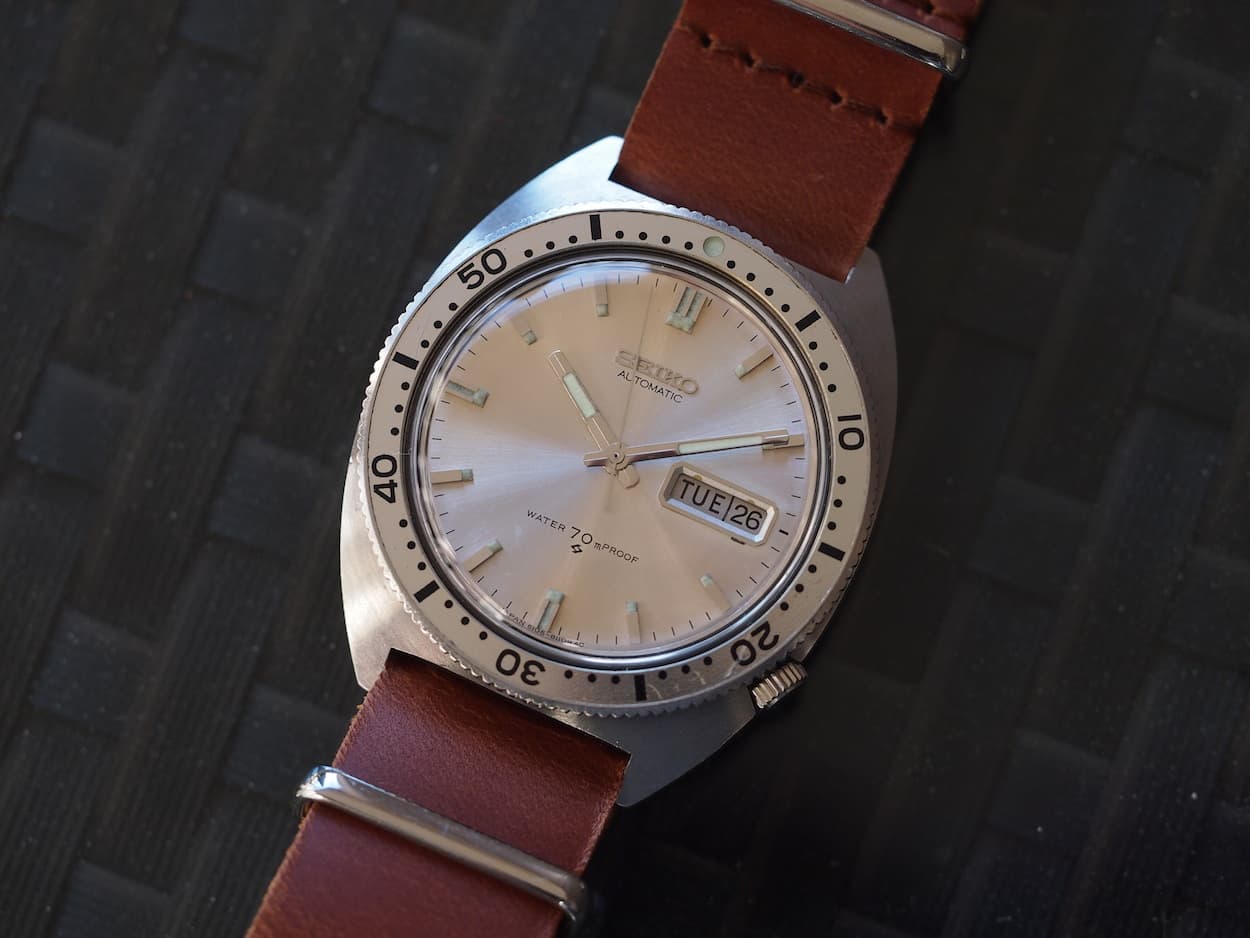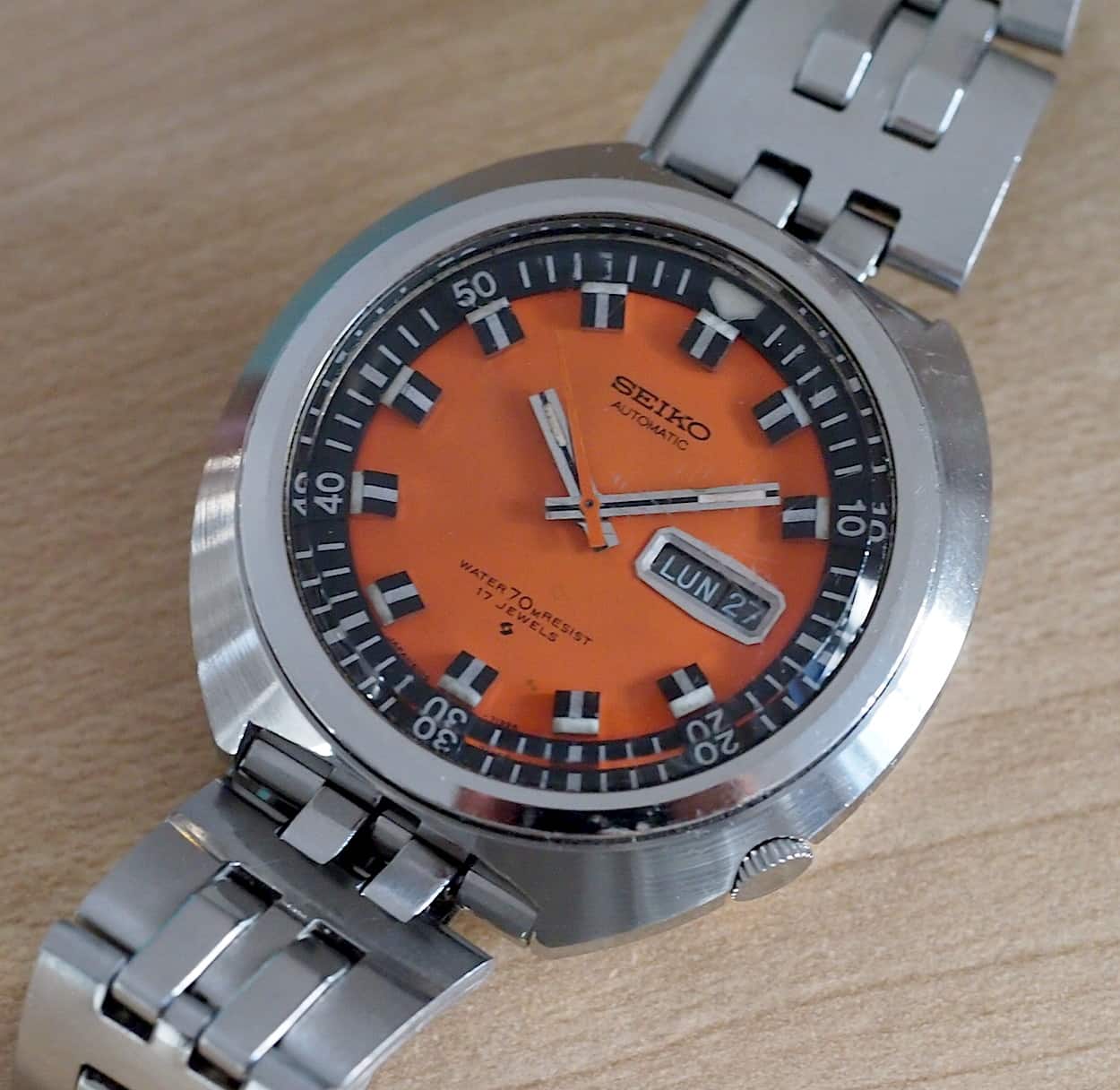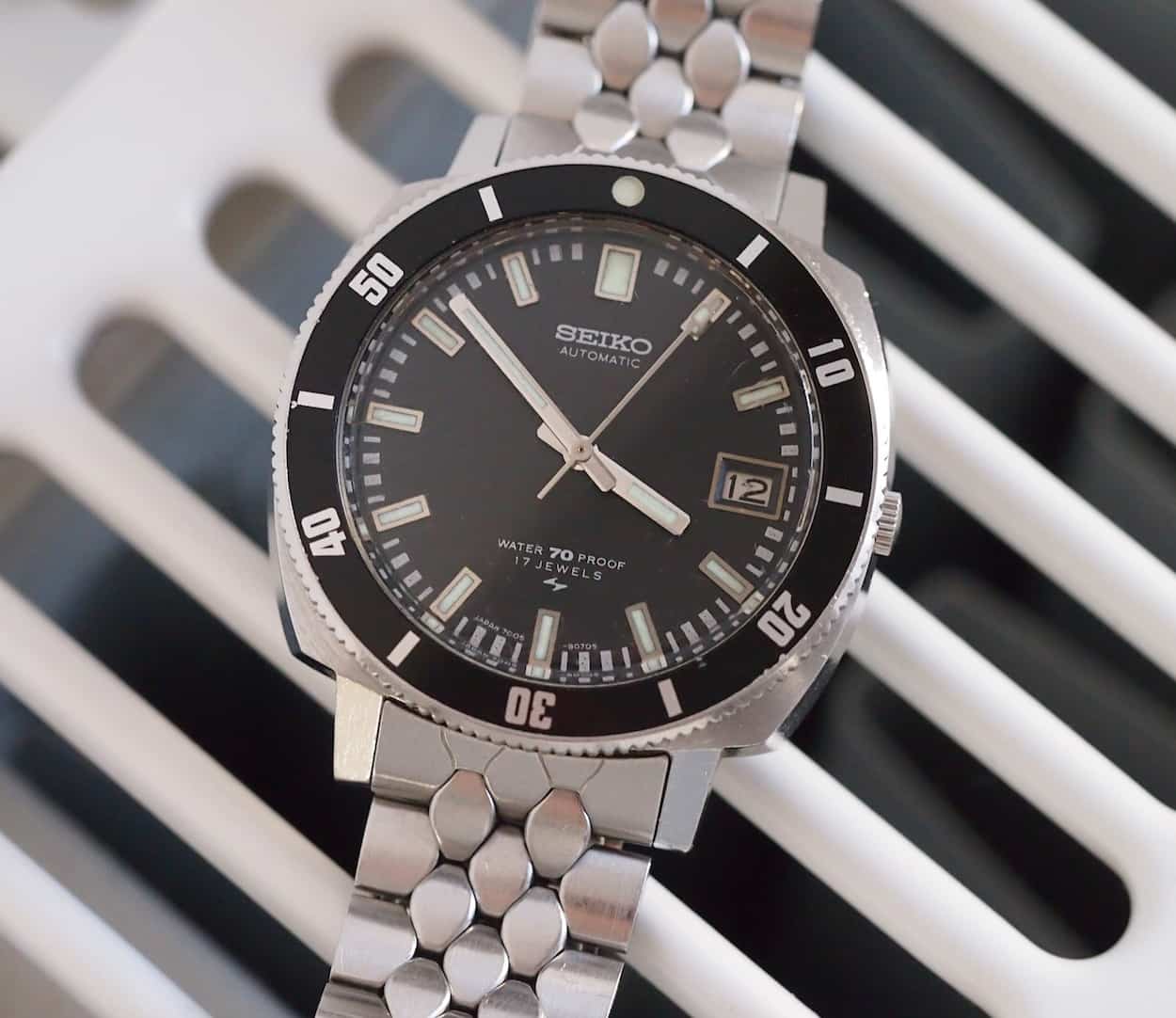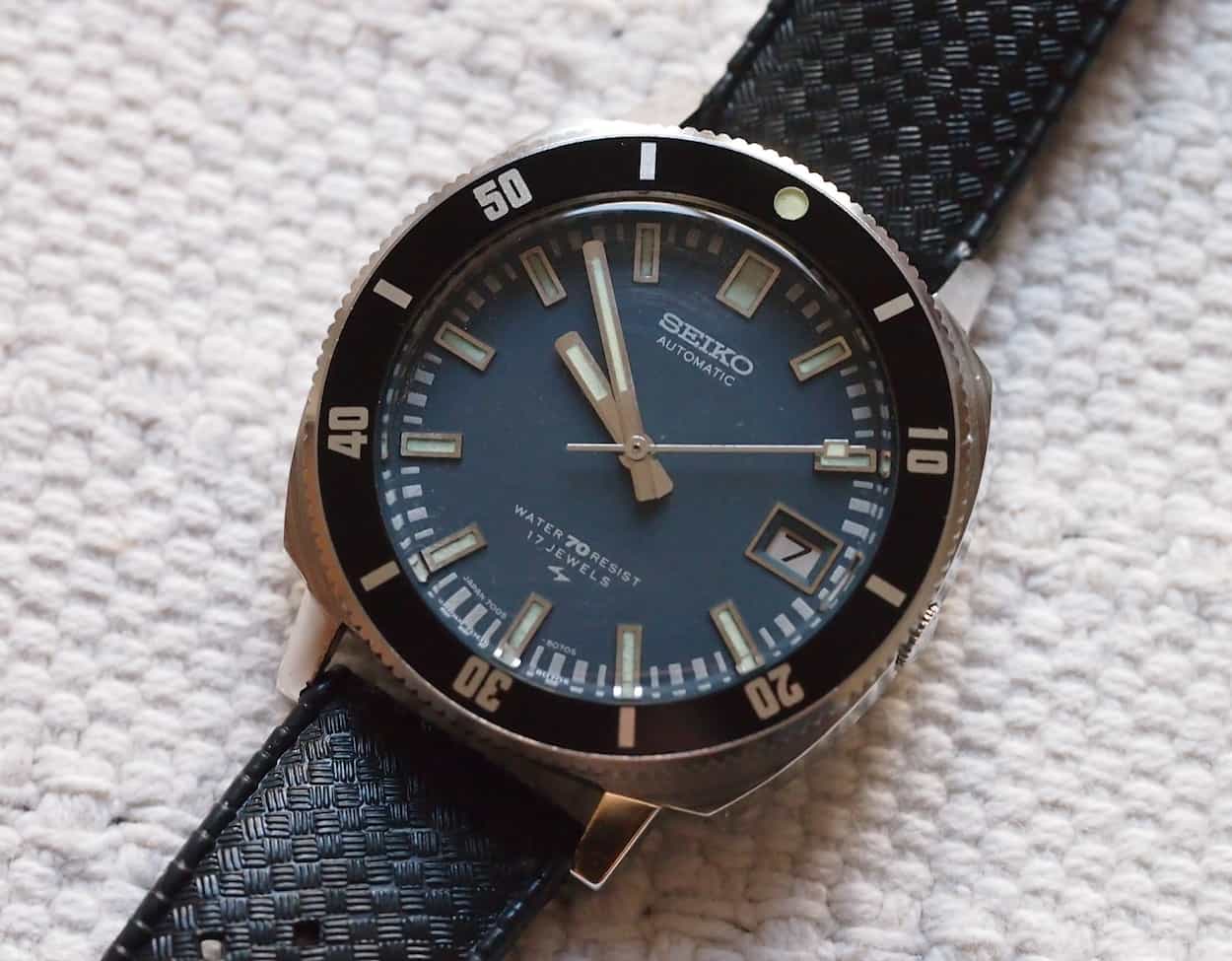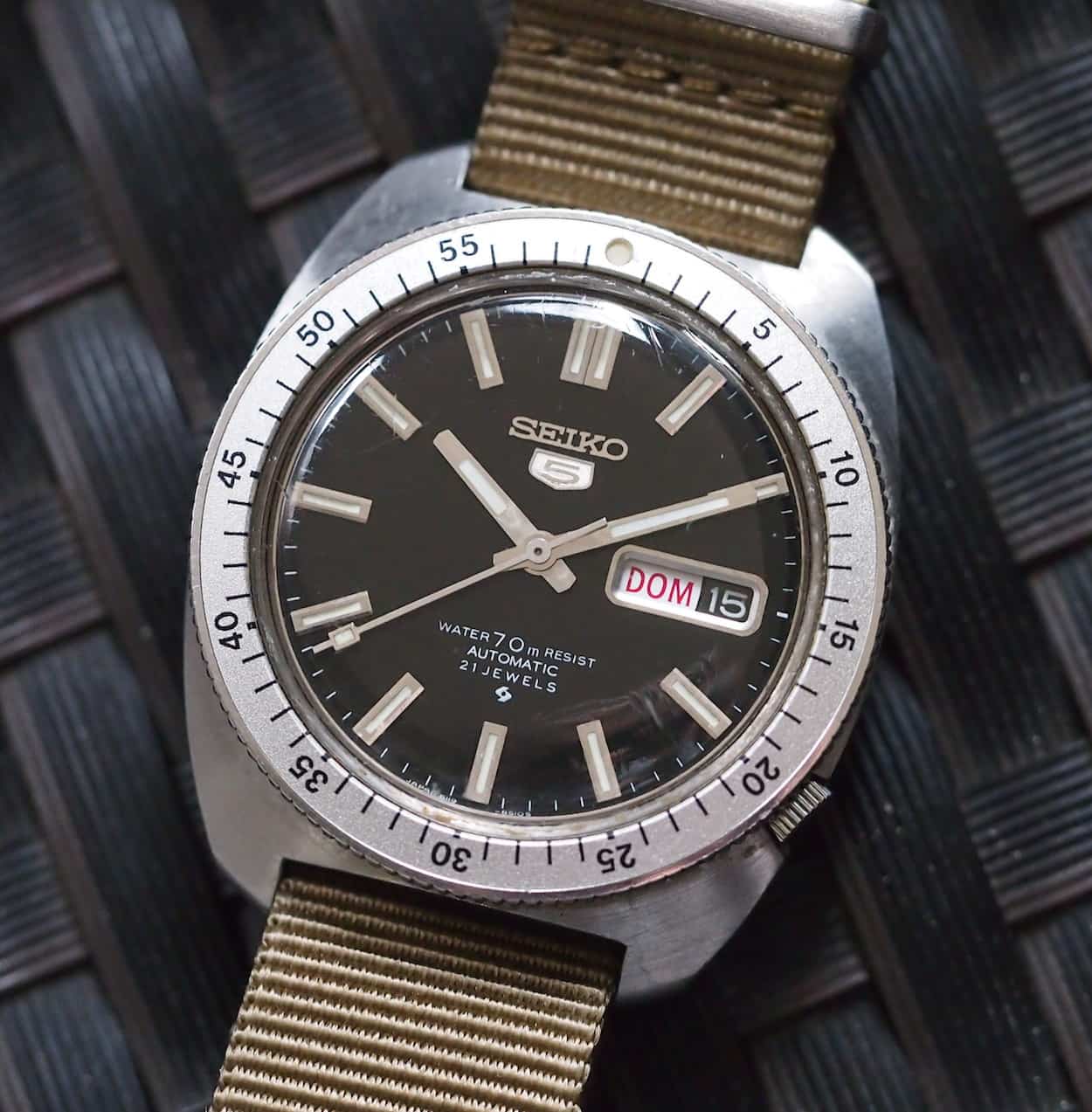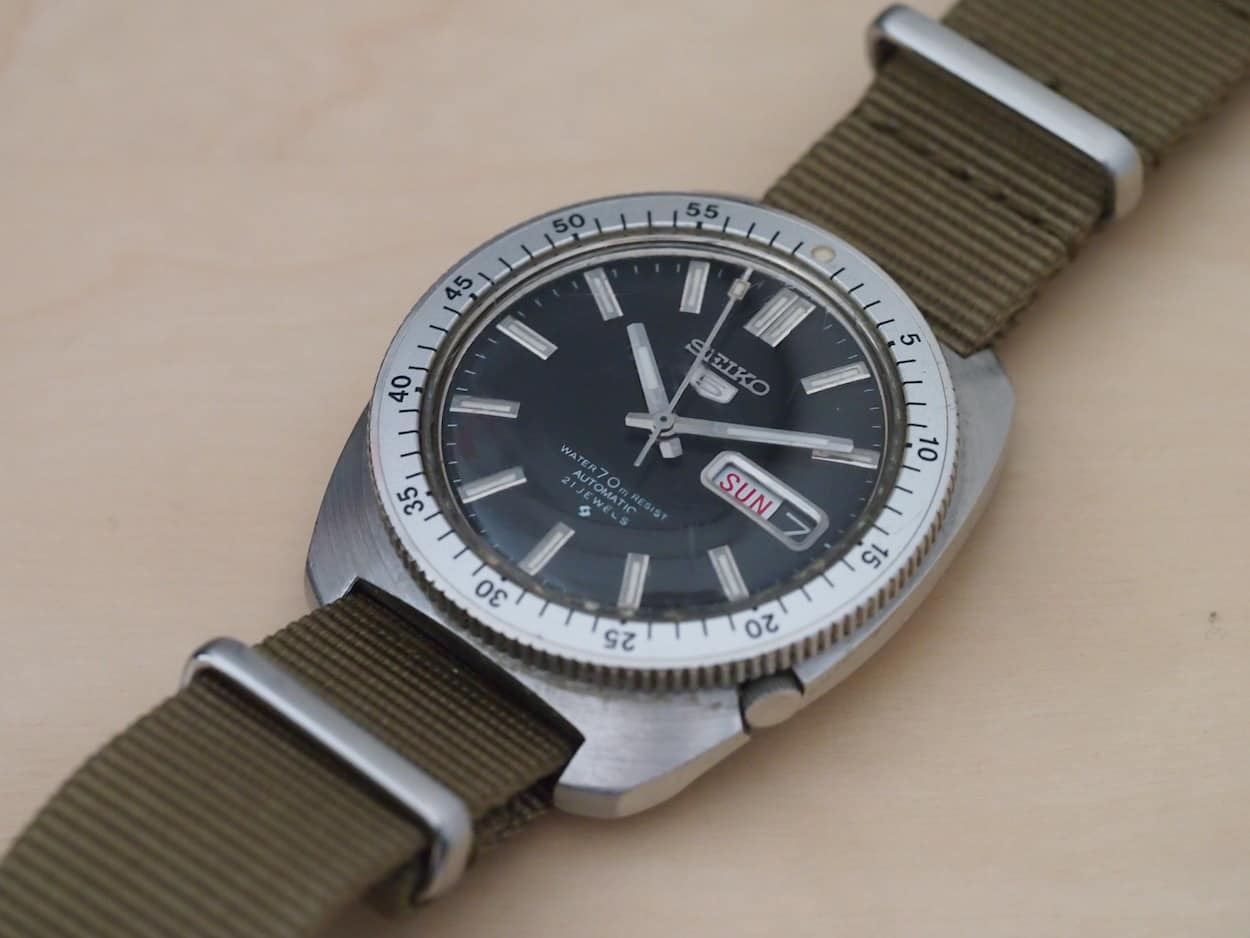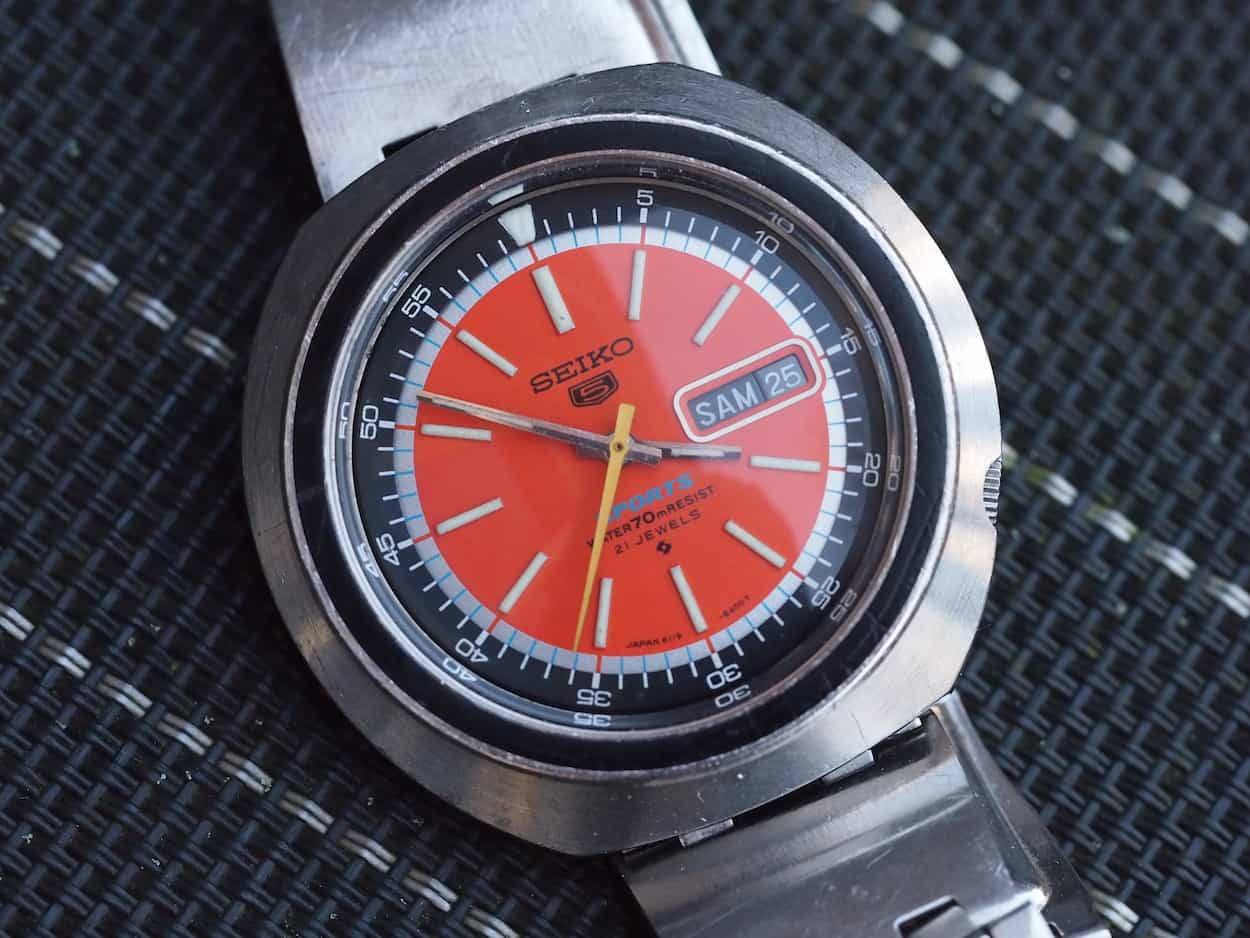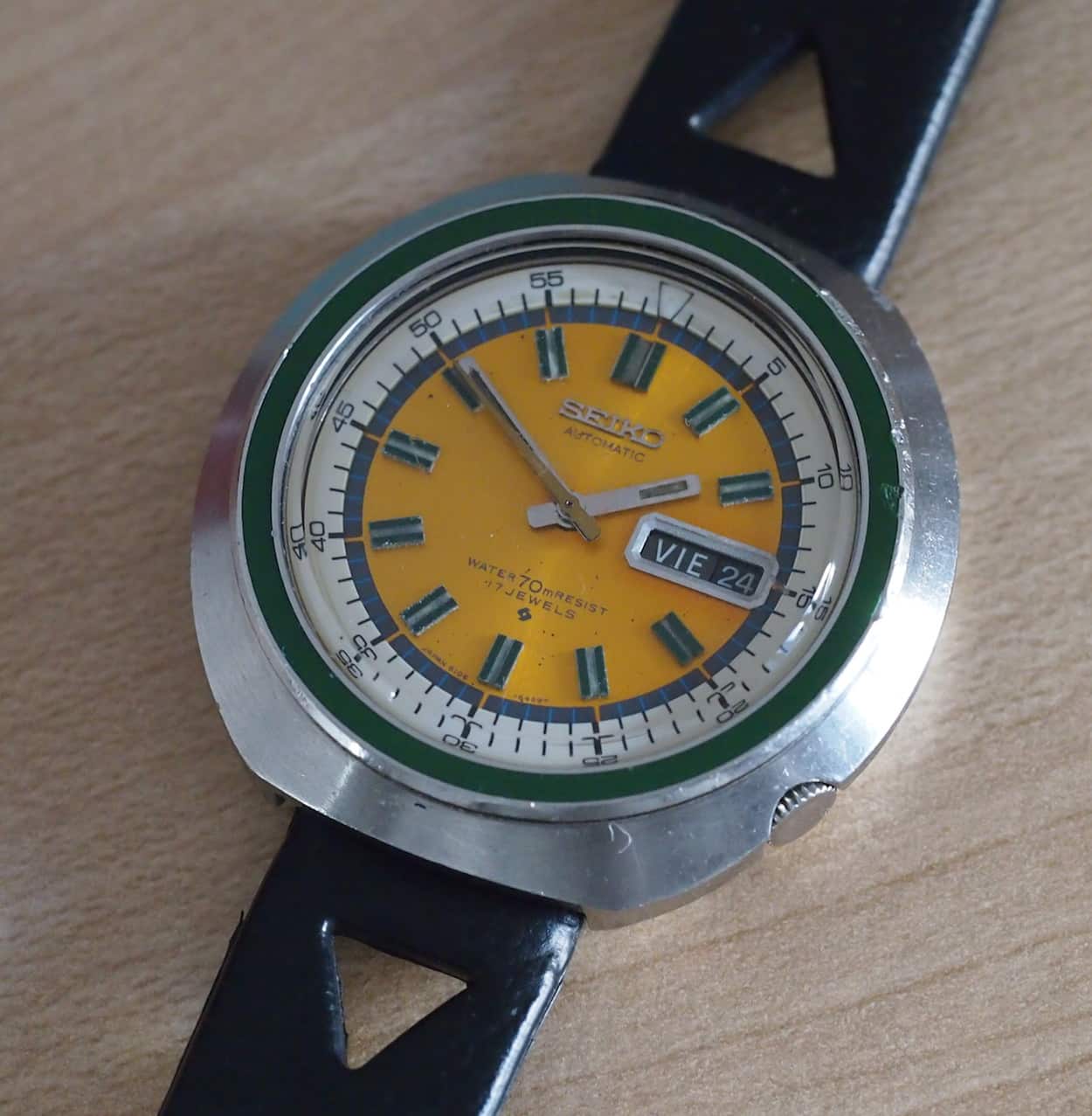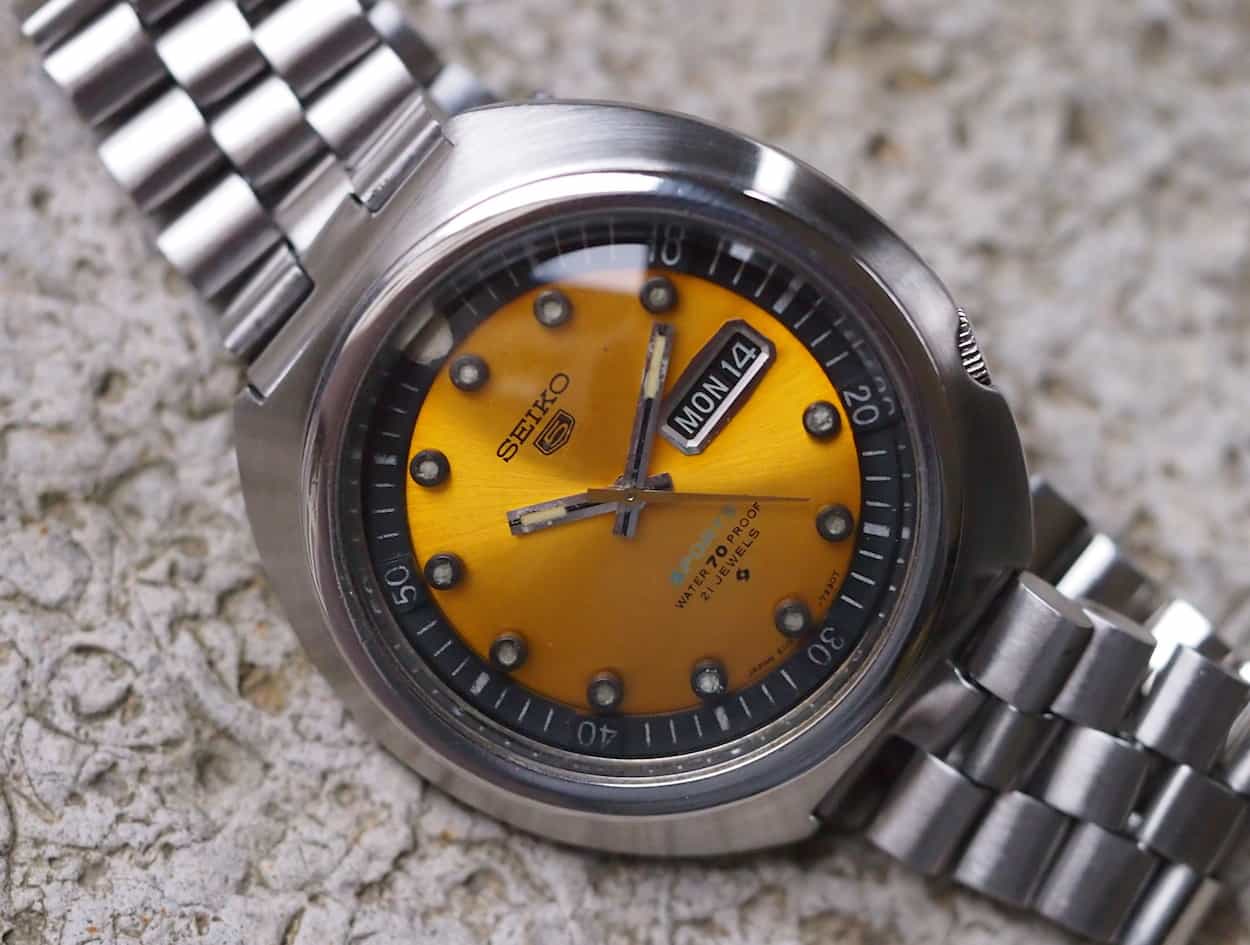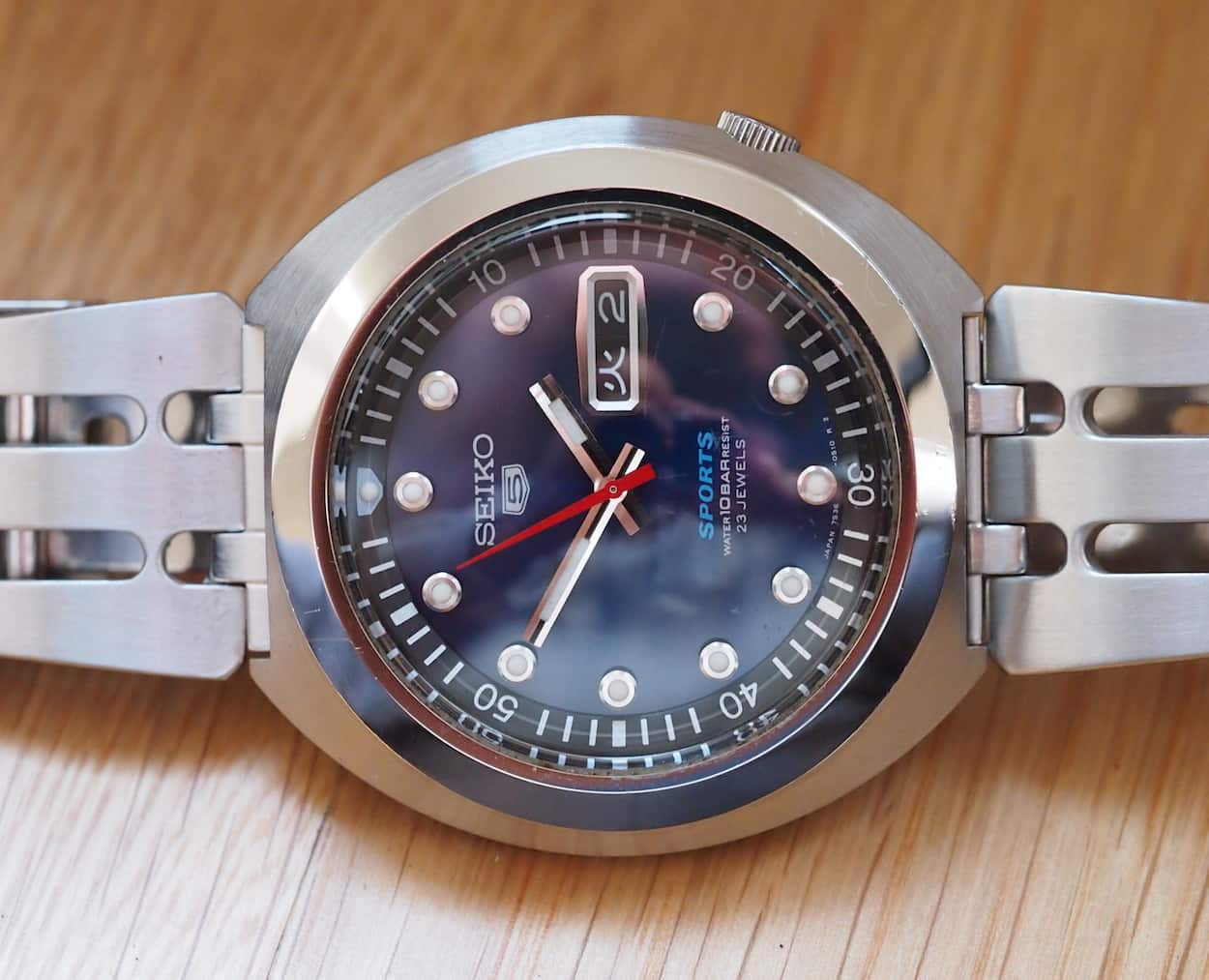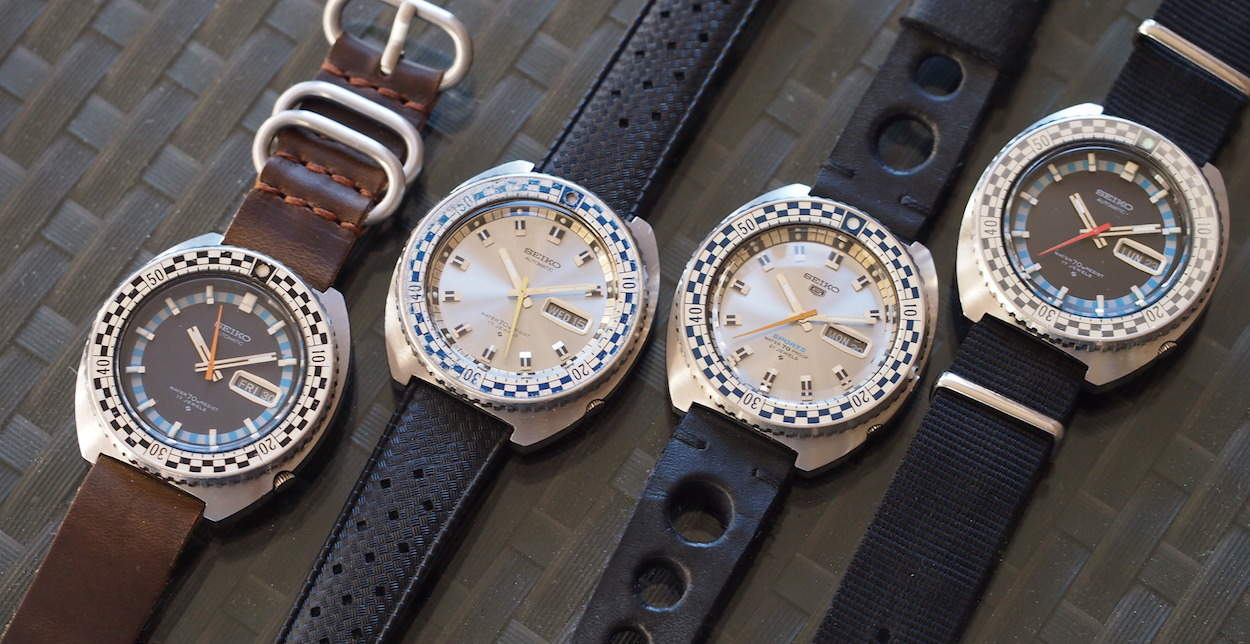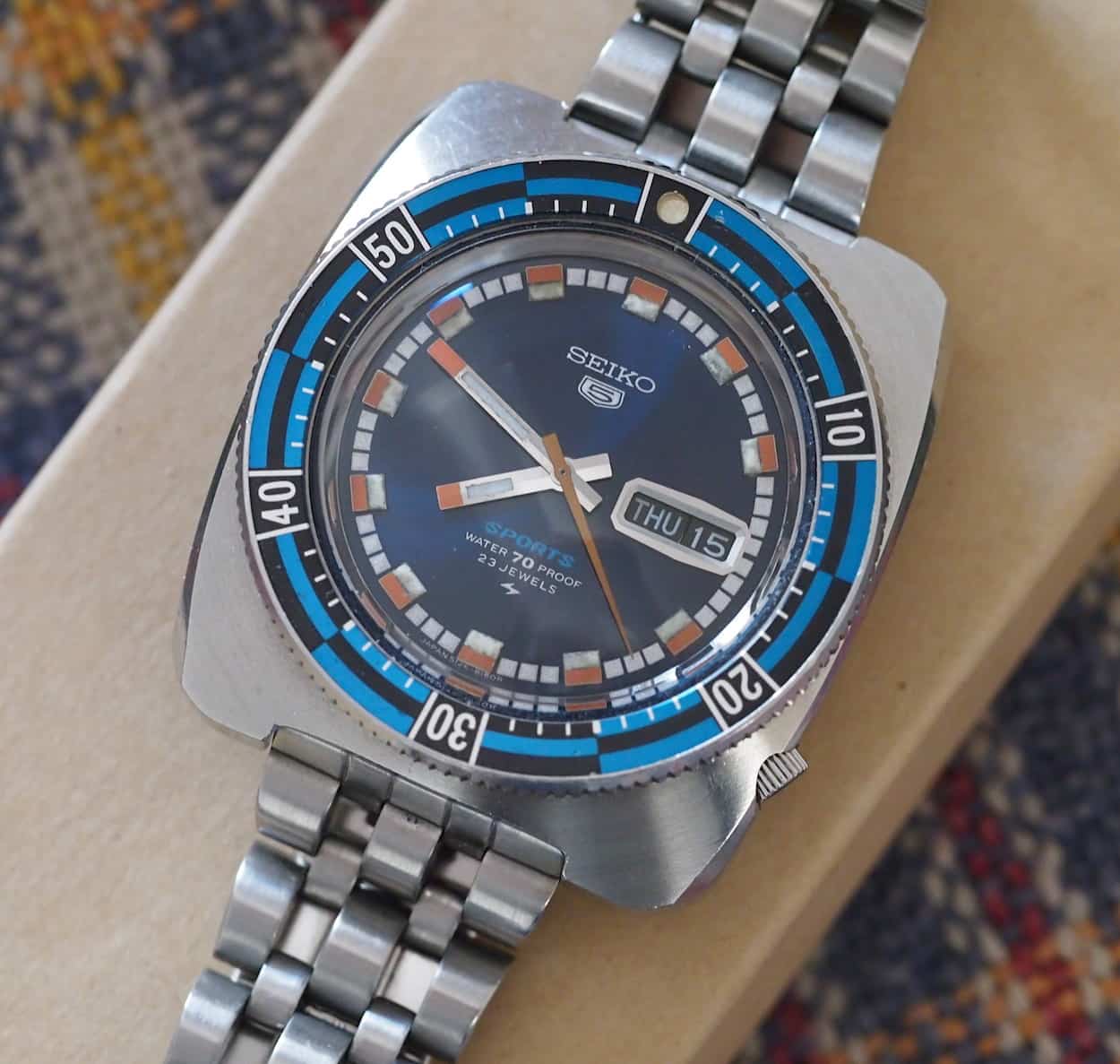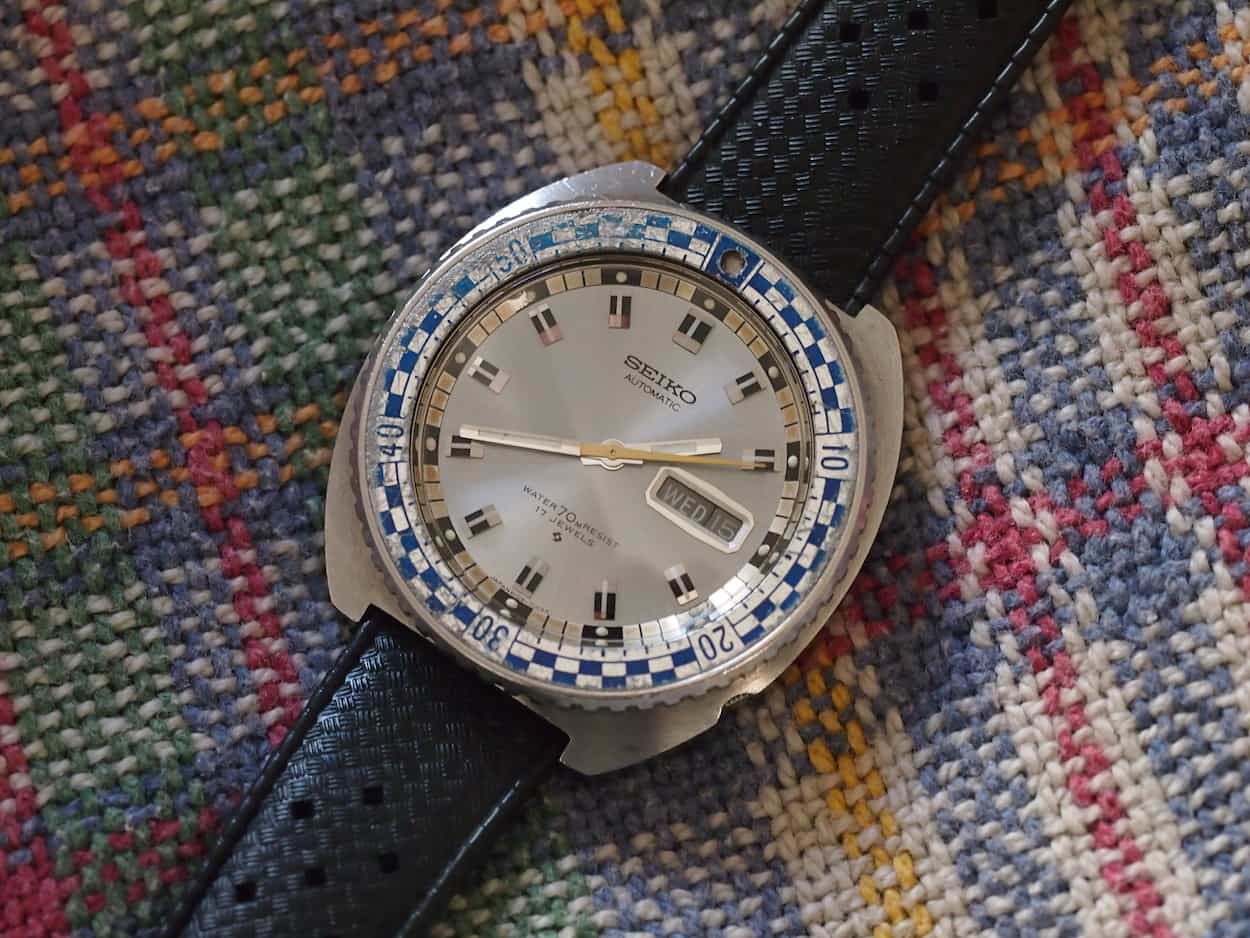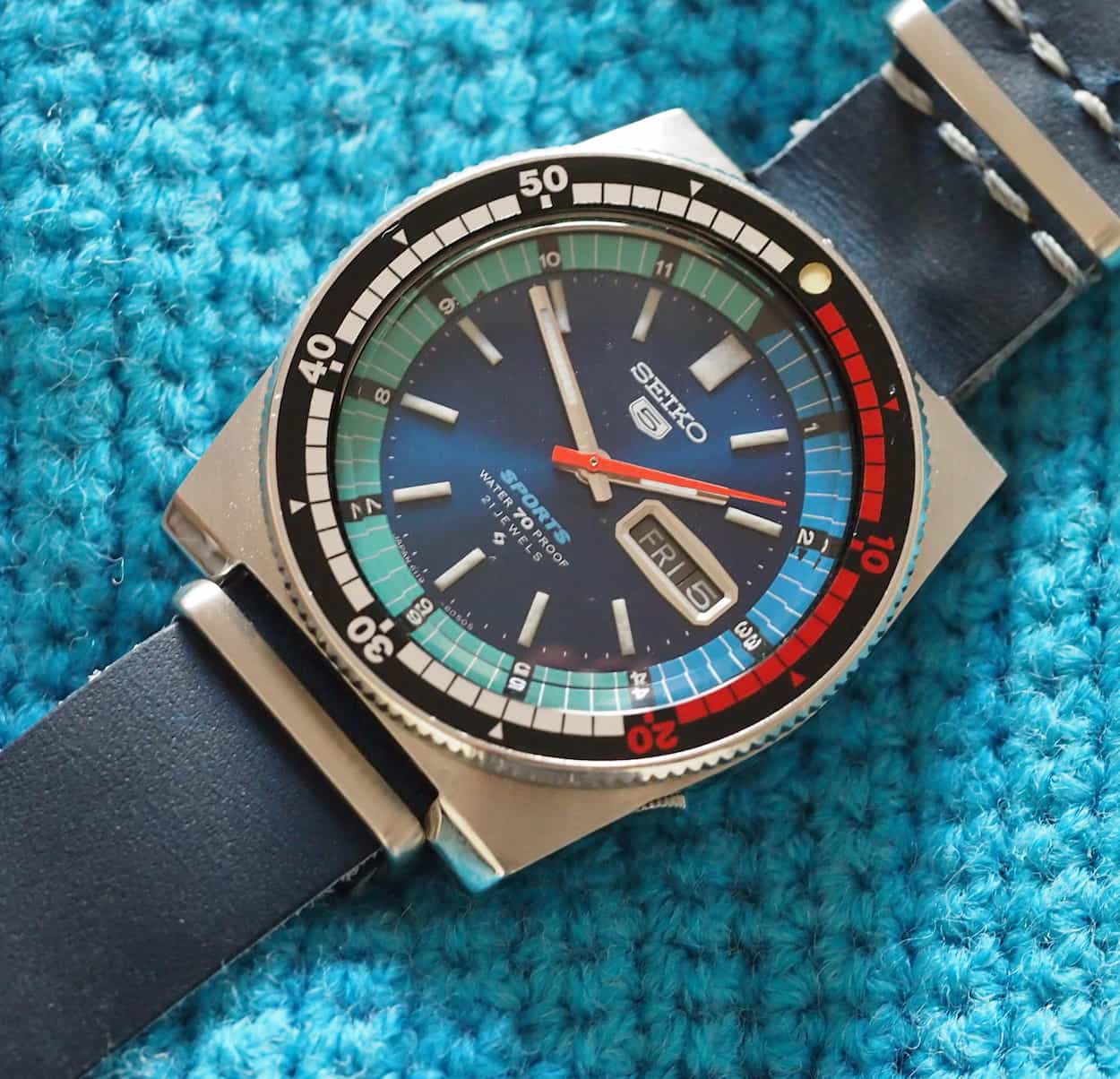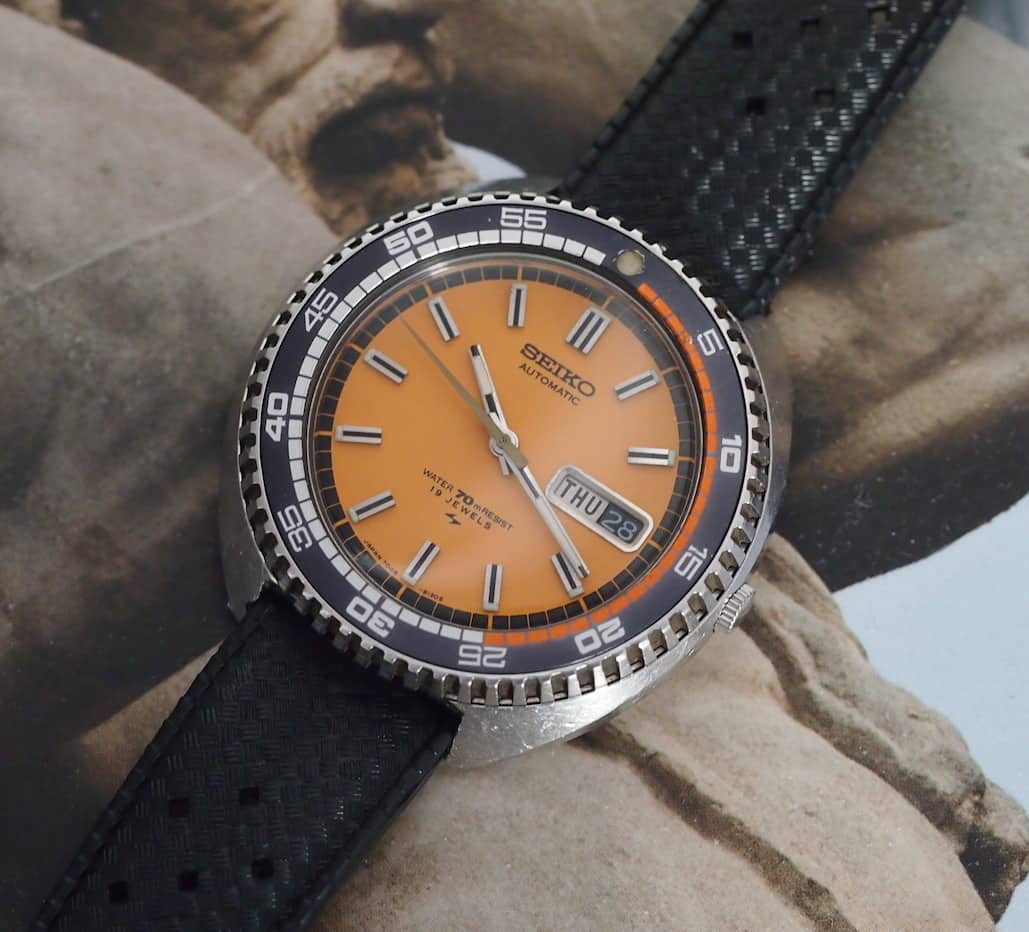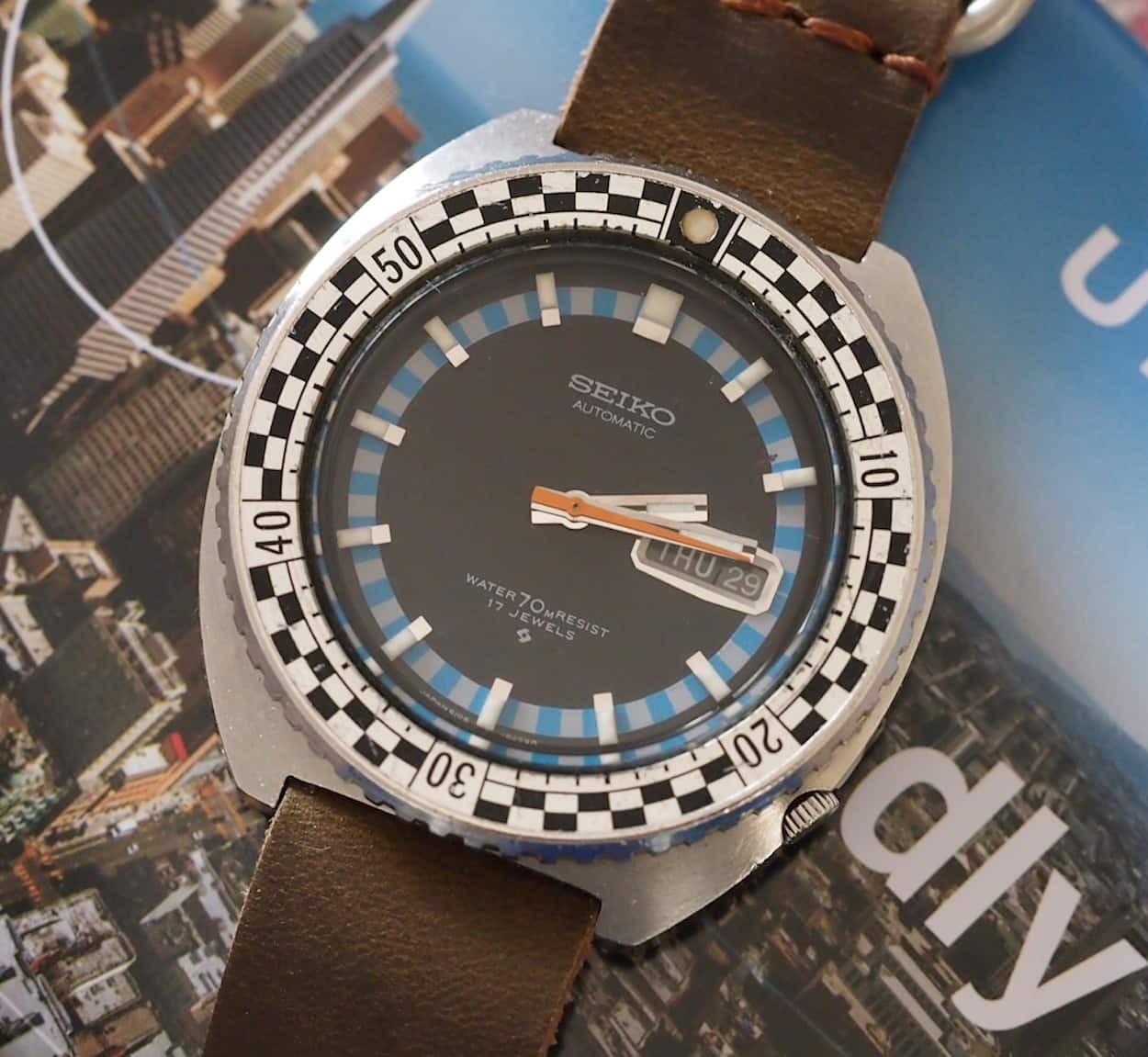#TBT The Vintage Seiko Sport Divers
If you backed me into a corner and asked me about the subset of watches I own that I enjoy most, you’d receive a surprising answer. You’d likely guess something related to vintage chronographs, Swiss or Japanese, or perhaps higher end vintage Seiko diving watches. While I enjoy either owning or handling those types of timepieces, you’d still end up being mistaken. Readers, my favorite collection of watches are the vintage Seiko Sport Divers.
Vintage Seiko Sport Divers
Now, you’re likely sitting there thinking, what exactly is a vintage Seiko Sport Diver? Well, the definition can be left to some amount of interpretation, but I have a very clear idea about what the Sport Divers mean to me. Specifically, Seiko made many “light” diving watch models in the late 1960’s through the mid 1970’s that were 70M depth rated, and indicated as such on the dial, and contained either an internal or external rotating bezel. Furthermore, they are not hand winding and use Seiko’s magic lever system. By the way, the rotating bezel part is important, as there are other sporty pieces from this time that are marked as 70M water proof or resistant but do not have a diving bezel. The reason for making these pieces is clear; Seiko was providing a tool for those who were taking part in outrageously popular water sports and other outdoor activities.
Seiko made A LOT, as in hundreds, of variations on the Sport Diver theme during this period. Variations come in the form of completely separate models, models with similar cases, but different dials and/or bezels, similar models in different color options, and models that were sold as Seiko’s that were later branded as “Seiko 5”. Also, let’s not forget that the number of model choices was compounded due to the fact that Seiko had the Suwa and Daini factories competing with each other to come up with the most compelling models.
So, why do I like these so much and how will I boil this potentially massive subject down to a reasonably sized article? Answering the first question is easy; I like the vintage Seiko Sport Divers because they are of very high quality and look great, are affordably priced, run like a plow horse, are easy to service, and come in so many great varieties. The second question took some thought, however. I pondered and recalled how Robert-Jan likes to have a chuckle at the endless nicknames given to Seiko watches. So there you have it, this article will focus on the majority of Sport Divers that have obtained a nickname over the years. Coincidentally, these also happen to be the most popular and, generally speaking, valuable pieces. Before I forget, I need to give thanks to the forum members of the SCWF, who helped me recall the various nickname pieces. I’ll provide you with a very brief write-up on the features, variations, and, finally, some buying tips on each featured model. As always, with vintage Seiko, eBay is a popular place to look as well as the forums. Oh, and always ask questions on your favorite forum if you have questions before buying. Now, settle in, crack a beer or grab your coffee as this article has some length: let’s begin!
The First – Seiko 6106-8100
While it’s difficult to verify this with absolute certainty, the 6106-8100 is commonly known as the first Seiko Sport Diver. This watch was issued in 1968 and made for several years. Compared to other vintage Sport Divers we’ll discuss later, this is a very classic looking piece that actually compares well, design-wise, to many Swiss divers of the same era. It contains a domed acrylic crystal and, as an early 6106, only has quickset for the date and not the day. In my opinion, it’s one of the best-looking Sport Divers and because it appeals to general vintage dive watch collectors, it is quite popular. The gray dial appears to be the most prevalent, but I have also seen the watch in yellow, white/silver, and blue. As an unrelated aside, there is a similarly designed 6117-8000 Navigator Timer that’s also fantastic. We’ll cover that model in a future article.
Tips/Market Values: The great thing about these pieces is that crystals and movement parts are commonly available. Seemingly rough looking pieces that have all the right cosmetic parts can be a good buy. Hands, dials and bezels become more difficult to source. You really only need to look out for water damage and severely rotted dials. As far as value, they range wildly. I’ve seen pricing range from roughly $150 to as high as nearly $400 for great pieces. I’m sure the market attributes some additional value for original bracelets, but I do not; they were rattletraps and stretched with ease. These watches do look great on everything from NATOs to vintage ammo pouch straps.
Seiko’s First Orange Diver
The first generation Seiko Orange Monster was a smash hit and it led to a lot of collectors looking for other orange Seiko divers. While there have been several, there’s only one “first”. The first happens to be the 6106-7107 and was produced in 1969 through 1971. The watch features a UFO like case that was later used on the Sushi Roll which we’ll cover in a bit. It has an internal bezel that rotates via use of the time setting crown. Unlike on our previously discussed watch, the Orange Diver contains a Hardlex mineral crystal instead of acrylic. Also, this is one Sports Diver that is usually found on its bracelet.
Tips/Market Values: This is one of the few vintage Seiko Sports Divers that is almost always available on eBay. My biggest piece of advice is to check with the seller that the internally rotating bezel works smoothly for 360 degrees in both directions. The backside of the bezels contain plastic ridges or teeth that, when worn, no longer function. Replacements are difficult. Otherwise, ensure that the hands are correct and do your best to source one with the original bracelet. Pricing tends to fall right around the $250 mark but can sometimes be found for less.
Poor Man’s 62MAS
You hopefully recall our article on the Seiko 62MAS, Seiko’s first professional grade diver. Well, Seiko made a Sports Diver version with a different style case but it apes the 62MAS with a crown position at 3:00 and similar hands. The 3:00 position is more typical from Daini (2nd) made watches and is interesting as most Seiko’s position the crown at 4:00. Note that a Daini-made watch is evident by its sideways “lightning bolt” symbol on the dial and case back whereas the Suwa symbol looks like an italicized parallelogram. Back to the watches: the Poor Man’s features a delicately lugged squared case that rings in at roughly 35mm. The watch is notable for having a very stark design, bold bezel and clean dial design. These pieces were made from roughly 1969 into the 1970’s and fall under the 7005-model designation. Dials are most often black but were produced in dark blue and white. The crystal is acrylic.
Tips/Market Values: Poor Man’s are popular watches amongst collectors but are sometimes flipped due to their smallish size. Bracelets are a plus but these look equally good on a topic style strap. Ensure that the bezel is original, as I have seen several replaced with later inlays. Pricing tends to range from $250 – 400. Also, you can look for 7025’s which were made in the late 70’s and are essentially the same save for a bezel with less bold font.
The “Gene Kranz”
If you remember watching the movie “Apollo 13” you likely recall the intensity of Ed Harris’ character, playing the Flight Director for the mission and clad in a white leather vest. The Flight Director, in real life, was Gene Kranz (also mentioned in this article). While the astronauts were equipped with Speedmasters, Gene wore a Seiko 5, 6119-8460 Sports Diver. The one you see pictured here is black but Gene’s was white. The “Gene Kranz” is fairly similar to the first watch we discussed but contains blockier lugs and a smaller font bezel. Like the 6106-8100, it has a conservative dive watch style and wears very well. It has an acrylic crystal and it’s one of my favorites.
Tips/Market Values: The Gene Kranz is not a vintage Seiko that comes up for sale frequently. In fact, other than mine, I’ve only come across one other. I honestly don’t think that most recognize the watch at this point. The good thing is that pricing tends to fall between $100-200 but that’s coming from a very small sample set. Here again, ensure that the watch comes with the bezel as finding a replacement will be difficult.
The UFOs/Saucers
The UFOs/Saucers are interesting vintage Seiko pieces and, without a doubt, display a very 1970’s vibe. The cases are thick, solid and contain interesting filled external bezels coupled with internal rotating dive bezels. They also boast some of the most colorful dial details of all the Sports Divers. These watches were actually issued in both the 6106 and 6119 Seiko 5 series. The differences are that the yellow UFO was only produced as a 6106 while brown and black dial versions are seen in both series. Some consider the original orange diver (the 6106-7107 that we reviewed earlier) part of this series but I’ve kept it separate due to its unique case design. Furthermore, the 6119 ushers in a new orange diver under the Seiko 5 moniker, which, again, has some amazing, dial details. Hands do differ slightly amongst some models. Bracelets are often stout, plate-like, designs and are commonly found with the models.
Tips/Market Values: The UFO’s/Saucers are fairly common on places such as eBay. I see a lot of black and brown models and slightly fewer orange models, perhaps owing to the fact that they were only made for the 6119 series. Similarly, the 6106 yellow models are also somewhat less common. For these models, see my yellow piece as an example; expect some fade on the internal bezels and possible chipping on the outer filled bezels. My yellow piece actually came with a yellow internal bezel that has faded to white which gives it a 1970’s Oakland A’s look in my opinion. The orange 6119 I show has its original bracelet and a gorgeous dial; it’s really a sight to behold. One needs to pay attention to the internal bezels again to ensure they work. Also, I’ve had trouble sourcing NOS crystals for these but good aftermarket crystals do exist. This is another model that does well on original bracelet, although the vintage strap I show on the yellow piece does a decent job. Pricing tends to range from about $180 to roughly $300 for great pieces. The UFO’s are nice, easy ways to enter the Sport Diver arena.
The Sushi Roll
Well, this is timely as I finally just picked up this vintage Seiko for my collection. The Sushi Roll features a UFO-style case with an internal rotating bezel. It gets its name from the “maki-esque” hour markers on the dial. As far as I can tell, they were issued in dial colors of black, yellow, green and blue. The crystal is Hardlex. Typical serial numbers are 6119-7163.
Tips/Market Values: Sushi Rolls are amongst the most coveted Sports Divers. They seem to be cherished in Asia, which makes them tough to source in the rest of the world. I took a gamble on my yellow Sushi Roll as it came from the Philippines (known for aftermarket parts on all old Seiko’s and Citizens). It ended up being a nice piece and I probably bought it at a slight discount due to its location. As always, be on the lookout for non-working inner bezels and correct hands. Due to the prevalence of these watches in Southeast Asia, one also has to watch out for, or be willing to accept, some wabi on the dial. Bidding is always fierce for these pieces and, therefore, expect to pay at least $250 to over $400. Honestly, I’ve seen a lot of dogs sell for >$250, so buckle up! As an aside, the blue-dialed Sushi Roll I’ve pictured is the reissued 7s36-0060 from 1997. It was a JDM only piece and many must have been well worn, as these seem to typically show a lot of wear. Water resistance is increased to 100m and I believe the case is slightly larger. These also sell fast as they capture the look of the originals perfectly.
The Rally Divers
If I were forced to choose the “kingpin” of all vintage Seiko Sports Divers, then there’s no doubt that the Rally Divers would rule. Expect a separate article on these at some point as these are amongst the most collectible and discussed vintage Sports Divers on the planet and, like most valued things, they possess an Achilles heel that we’ll mention later. The Rally Divers are defined as the Sports Divers that contain checkered bezels: full stop. My next, and last, set of watches that I’ll discuss will highlight why the bezel comment is so important. In any case, a notable fact about the Rally Divers is that they are the only nicknamed Sports Divers to span both the Suwa and Daini factories. They occur in the Suwa-made 6106 and 6119 references and also the Daini-made 5126 reference. Rather than going into detail on each sub-model, and there are many slight variations on the theme, I’ll refer you to what I think is still the best reference. Needless to say, there are variations within the 6106 and 6119 series that only change the movement and add the “5” denoting the Seiko 5 models, but there are also some unique dial designs amongst each reference as well.
When we get to the 5126-series, we start talking “grail” watches for some collectors, as these are extremely difficult to source. There’s no doubt about it, I pined for the black-dialed 6106 you see here. In an act of desperation, I bought the piece you see with the black dial and reddish hand without the reddish hand: my watchmaker actually custom-made a hand to the exact size of the original. Yes, I had to have one and now, as you can see, I have two. Addictive! By the way, crystals for all Rally Divers are Hardlex.
Tips/Market Values: Where to start with these… Bidding on these vintage Seiko models is always highly contested. Deals usually occur when something is wrong, the description is awful, or the piece is located somewhere such as the Philippines. The biggest issue with these, I told you I’d get to it, relates to the bezels. They fade mercilessly and also scratch easily. So, be on the lookout for aftermarket bezels, as they do exist, at least in the light blue color for the 6106’s and 6119’s. Also, be sure to check the hands to ensure they are correct for the watch; I have seen many incorrect replacements. Also, unless you like the bezel or are willing to live with aftermarket, don’t expect to find used or NOS. I’d watch out for dial rot around the edges of the silver and blue-dialed pieces. On the black-dialed pieces, you often find chipping on the blue and white painted sections. I generally see the 6106 and 6119 rally divers price in the $300-500 range but bargains are out there from time to time. When we speak about the 5126’s, they’re simply rare. In general, I find anything desirable from the Daini factory to be rare, but these are really like hen’s teeth. If you need replacement parts, good luck! For a good piece, expect to pay over $500 (could be over $600) and likely over $300 for something semi-rotten or slightly incorrect.
The Rally Divers that aren’t really Rally Divers
Well, because the Rally Divers are so popular, you often see seller’s calling some vintage Seiko Sport Divers “rally divers” that aren’t really as such. This, however, does not mean that these pieces don’t have merit. In fact, the two I’ll highlight are amongst my favorite Seiko’s. First off, we have the 6119-6050, which features a large, blocky case. These came in blue, black or silver dial versions and feature a beautiful, painted inner bezel. The crystal is Hardlex. Second, we have the Daini-made, acrylic crystal 7006-8030. This piece came with a yellow, orange, black or silver dial and features a 3:00 crown.
Tips/Market Values: The 6119 mentioned here is a popular watch. These are well liked due to their large cases and colorful inner bezels. On these, be careful of incorrect or aftermarket outer bezels and watch for severely chipped inner rotating bezels. Sadly the latter issue is very common. Obviously, check the hands and the functionality of the internal bezel. 6119’s of this ilk tend to sell for $250-350. Regarding the 7006, this is a sweet little piece (the diameter is a bit smaller) that can still be had for a decent deal. Its looks are not unlike the vintage Certina divers. On these, beware of rot and aftermarket or incorrect bezels. Pricing tends to fall anywhere from $150-250 making these a nice buy.
Whew, that’s a lot of vintage Seiko Sport Divers! I hope you enjoyed a brief introduction to some of the more popular pieces. Of course, the pictures I show are only but a few of the color variations of the models I describe. Troll the web to find additional examples. I’ll make sure to come back again and discuss some of the other Sports Divers that haven’t been given a nickname, as there are plenty of other fantastic watches from the series. In the meantime, happy hunting and don’t hesitate to share pictures of your favorite vintage Seiko Sport Divers below!
*This article appeared here first on April 2nd 2015. This version has been revised / updated.

